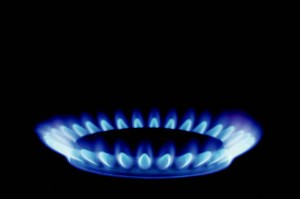The Future of Natural Gas: Supply and Impact
“In all, with our current level of gas reserves, researchers have estimated that we have 60- 70 years until we start running in to trouble”
By Saif Qureshi, Online Editor
Natural gas should be familiar to most homeowners—it’s one of the more common sources of energy (and bills!). But have you ever wondered where this resource comes from, what it’s used for and how long we’ll be able to use it before it runs out? This article will describe natural gas, its present and future in the global marketplace and how it will affect us Canadians.
Natural gas is one of the cleanest, safest and most useful fossil fuels out there and, luckily for us, it has many uses and is found in vast quantities all over the world. Most reserves of gas can be found with other fossil fuels, such as in oil fields or coal beds. These reserves are then processed and delivered to our homes through an extensive network of pipes, which are operated by local gas companies.
We use this pure form of natural gas in various sectors, such as residential, industry, commercial and electricity generation. Some of the common uses for gas include cooking, heating (also cooling but this is less common), fuelling automobiles and for generating electricity. In fact due to new technology, more electricity is expected to be produced from natural gas in the future—in 2009 alone, over 50% of the new electricity generation in the U.S. came from natural gas. Moreover, while coal is the cheaper source of energy, it’s also the most environmentally damaging, and as a result of the environmental regulations duly placed upon coal, the electricity industry views natural gas as the cleaner alternative.
Currently reserves are still high but, unfortunately for us, natural gas (like other fossil fuels) is a non-renewable resource and its formation usually takes millions of years. So unless scientists figure out a way to speed this process or one don’t mind waiting, it becomes important for us to try and figure out how long we have until this resource runs out.
The Score:
Several companies, geologists and environmental groups have created estimates for gas reserves, but none are precise since no one actually knows how much gas there is until it’s extracted. Accordingly, a lot of estimation or “guesstimation” is done. Yet overall, the consensus is that as of January 1, 2009, total world proven reserves (these are likely to be recovered) of gas are estimated to be around 6,254 Tcf (trillions of cubic feet), with 41% in the Middle East, 32% in Eurasia and 4.5% in North America.
Accompanying this estimate, is that most forecasts predict that the demand for natural gas will steadily increase in the future due to the expected general economic and population growth. In fact, from 1975 to 2005, gas consumption has almost doubled.
Some short-term factors that affect demand for natural gas are: (1) the weather, as people require heating in the winter; and (2) the economic climate: since industries require less electricity and heating during a recession.
In the long run though, demand is expected to grow for several reasons. First, electricity generation is likely to increase not only because the population is growing, but also because the electricity consumed per person is increasing as we use more consumer goods, such as electronics. Second, the demand for natural gas will grow if any climate change legislation is passed that promotes natural gas, as it’s a low emissions fuel. (Also, it is more efficient during electricity generation, meaning that more electricity is produced per unit of electricity.) Next, advancements in natural gas technologies will increase demand (i.e. the future may see new natural gas appliances enter the market). Also, several industries require onsite electricity generation because they cannot afford to have a loss of power and it is likely that this trend of distributed generation will grow.
































Share the post "The Future of Natural Gas: Supply and Impact"